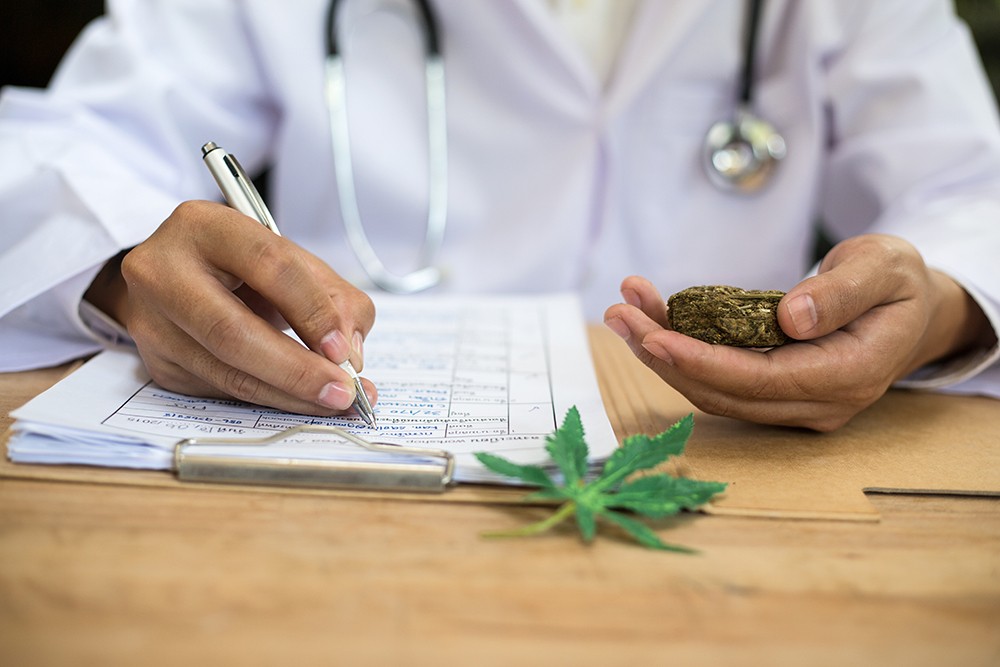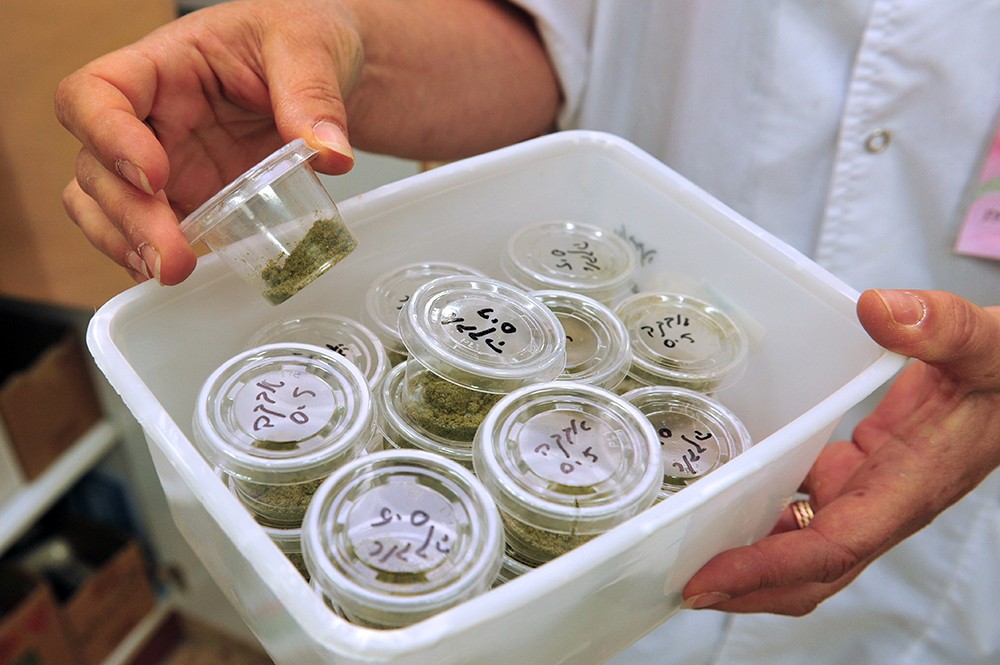Testing labs are one of the most critical components in the seed-to-sale cycle of the cannabis plant. They offer the producer (or processor or edibles maker and so on) valuable information about their products, help states regulate contaminants, and allow consumers to feel both safe and informed about what they purchase.
As with most sectors of the cannabis industry, testing labs have gone through a great deal of change in a very short time. And, as more states come online with legalization, the demand for expansion of the testing sector increases.
EXPANSION OF THE TESTING LAB SECTOR
According to a recent report from Research and Markets, the global cannabis testing market is expected to reach $1.4 billion by 2021, up from $822 million in 2016. However, with each state mandating different regulations, a lot of variability remains in both requirements and methods. Until there is federal legalization, and thus standardization in the sector, state-to-state variability between labs likely will continue, as will a great deal of variability between how testing labs in cannabis and testing labs in other industries operate.
Normally, for food commodities such as apples, strawberries, grapes, and other types of produce, the Environmental Protection Agency sets tolerance levels and the Food and Drug Administration, along with the U.S. Department of Agriculture, enforce those levels. However, since cannabis is a Schedule I drug, testing labs are deprived of federal standardization and regulatory support.
As a result of federal prohibition, states have attempted to create their own regulations and standards independently of one another, resulting in a patchwork of laws.

THE NEED FOR STANDARDIZATION
“If you think of cannabis as a material, then working on testing standards is no different than for any other material,” according to Dr. Ralph M. Paroli, director of R&D Metrology at the National Research Council of Canada and chairman of ASTM International’s D37 Committee on Cannabis. ASTM develops and publishes consensus technical standards for a wide range of materials, products, systems, and services across a variety of industries. Some 12,575 voluntary consensus standards, often incorporated into government regulations, operate globally. “From the point of view of the science, a material is a material and the testing needs to accurately measure and quantify the components you are trying to analyze. In fact, quite a few of the members on D37 are also members of other ASTM committees, so we bring the experience to developing these new standards in cannabis. The main difference is that it is very difficult to ship cannabis samples to labs between states or countries. As a result, traditional round-robin testing is more difficult, or even impossible.
“Once cannabis standards are developed, they will be of use to the various regulators,” Paroli continued. “As far as testing labs are concerned, once the testing standards are developed, testing labs will be more confident in using standards that have gone through precision and bias vetting. This will help address some of the complaints that have been recorded regarding going to different labs and getting different results for THC content, to give an example.”
Another organization that is helping with testing standards is the American Association for Laboratory Accreditation (A2LA). A2LA is a non-profit, internationally recognized accreditation body in the U.S. that offers a full range of comprehensive laboratory and laboratory-related accreditation services and training. A2LA has been working with tobacco, botanical, and natural-product testing laboratories for some time but started looking seriously at the cannabis industry’s testing sector in May 2013 when Maryland established its medical marijuana program. In 2014 A2LA began advising cannabis policymakers and has had a strong focus on helping to increase the quality of testing associated with the cannabis industry ever since.
“At the end of the day, cannabis testing is analytical chemistry and microbiology analysis of botanicals and botanical products for contaminants and adulterants,” said Roger Brauninger, A2LAs biosafety program manager and the point person for interacting with other organizations including, for the past few years, those focused on cannabis. “Thus, in so many ways this activity has much more in common with other analytical testing approaches than it has differences. That said, unlike comparable food, tobacco, and botanical product testing, there are real structural problems unseen in those other industries, owing primarily to the federal government’s classification of THC as a Schedule I drug. It should be noted that this is the only plant that is so classified, but it prevents the FDA from being a partner in setting up rational approaches in this industry.
“Because of the scheduling, we have not yet seen adoption of agreed-upon and multi-laboratory-validated industry standard analytical methods, nor has there been much progress in the development of plant-derived primary reference materials,” he continued. “These areas are starting to be addressed by prominent organizations, but there are still other areas of concern that are related to development of double-blind proficiency testing programs.”

OLDER VS. NEWER MARKETS
As with all other sectors of the cannabis industry, one hopes testing lab practices and standards improve over time. Colorado and Washington were the first states to legalize adult-use cannabis, and while the market in both states is going well, testing has not yet come into its own.
Dr. Don Land is the Chief Scientific Consultant for Steep Hill Labs, a company with both national and international presences in the testing sector. He explained older markets generally have laxer testing standards than those found in newer markets. For example, he said neither Colorado nor Washington tests for pesticides, even though such testing is standard in almost all other cannabis testing programs worldwide. “In many ways it takes so long to get through the legislative or policy process to get regulations changed that it’s often easier from a business standpoint for these programs to continue on with poor testing regulations and standards than to try to change them,” he said. “We have found that often newer markets learn from the mistakes of older markets, and because of this are able to jump so far ahead in their initial implementation that their systems are better.”
Land and his team at Steep Hill have consulted about testing regulations and standards with both industry leaders and policymakers. When asked what states he felt were doing things right, he said, “Oregon did a great job… They learned quickly from other states and have been responsive to meaningful changes in testing standards.” He also mentioned both Hawaii and Maryland have instituted exemplary programs.
While Oregon excelled in some areas after adult-use legalization, the state struggled with other areas. For instance, the initial rules for testing and lab accreditation rolled out in October 2016 and contributed to backlogs at laboratories and shortages of products on dispensary shelves. Two months later, regulators and policymakers eased the pressure on their new market by issuing new rules that reduced the number of times a harvest, a batch edibles, etc. must be tested. By adjusting testing frequency, regulators reduced costs for growers, manufacturers, and others, and consequently for consumers. Keeping prices for legal cannabis affordable reduces the attraction of the black market.
“Many states look to Oregon’s list of fifty-nine pesticides as a starting point, but from there modifications are made and each state develops its own list of testing requirements,” said Dr. Bob Clifford, general manager for Shimadzu Scientific Instruments, which has worked with cannabis testing labs for the past seven years. “For example, California has a list of sixty-six pesticides compiled from the Oregon, Colorado, Washington, and Nevada lists. Nevada and Colorado list twenty-four and fifteen pesticides, respectively.”
Jeremy Sackett, chief science officer for Oregon-based Cascadia Labs, said no regulations are perfect as originally written. “Any new regulations, testing or otherwise, always require a ramp-up period to realize full success,” he said. “This is particularly true when dealing with both a new industry and a new set of regulations. The states that have implemented testing requirements for their regulated cannabis markets have certainly seen challenges ranging from high failure rates for pesticides to insufficient laboratory accreditation requirements. It is also important that scientific experts and the regulatory community continue to monitor the trends in testing results to identify how reduction or increase in certain testing requirements may help create a successful cannabis industry.”










